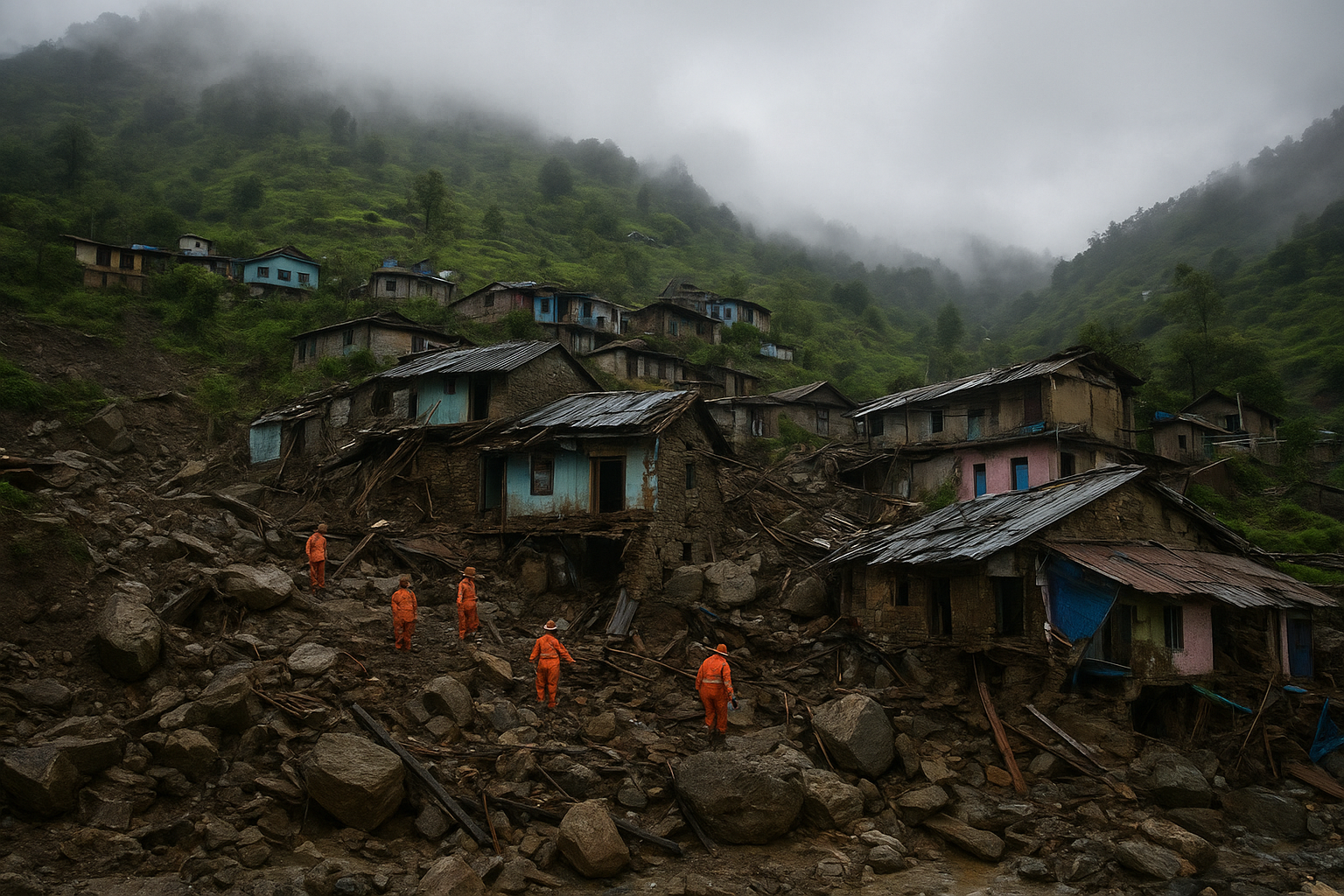Cloudburst Wreaks Havoc in Chamoli Tonight
A powerful cloudburst hit the Kuntari Lagafali ward of Nagar Panchayat Nandanagar in Chamoli district, Uttarakhand, on Thursday, collapsing six buildings and leaving many people missing. Rescue operations are ongoing with NDRF, SDRF, and local teams scrambling to find survivors and provide relief.
Uttarakhand’s Monsoon Crisis Intensifies
Uttarakhand has long been vulnerable to extreme weather, especially during monsoon season. Rapid cloudbursts and heavy rains have repeatedly triggered landslides, floods, and damage to infrastructure. Many remote villages, including those in Chamoli, struggle with road connectivity, delayed warning systems, and limited resources when disasters strike.
Current Situation & Reported Losses
Here’s what we know so far about the Chamoli cloudburst:
- Buildings destroyed: Six residential structures collapsed under debris in Kuntari Lagafali ward.
- Missing persons: About ten people remain missing eight from Kuntari Lagafali and two from Dhurma.
- Rescued so far: Two people have been pulled out alive from the rubble.
- Age range and identity: Among the missing are children (around 10 years old), elderly villagers (70+ years), and several middle-aged adults.
- Challenges: Heavy rain, poor visibility, and blocked access routes are hampering rescue efforts. Relief teams, ambulances, and medical personnel have been dispatched.
Voices from the Ground
Locals say the disaster has worsened because many homes were not built to withstand sudden debris flows. Arjun Singh, a survivor in one of the affected villages, said:
“We had just started to recover from earlier storms; now this fresh calamity has destroyed everything.”
Authorities emphasize the need for better early warning systems and stronger building codes in vulnerable hilly areas. Disaster management teams are pushing for more resources to reach remote zones faster.
Stakes for Lives, Livelihoods, and Infrastructure
- Human cost: Families are shattered those missing could be trapped, injured, or worse. Emotional trauma is high.
- Livelihoods at risk: Homes destroyed, farmland damaged, and movement restricted in isolated hamlets. Many depend on agriculture and small trade.
- Infrastructure vulnerability exposed: Power lines down, roads cut off, lack of immediate rescue access these worsen every time disaster strikes.
- Climate alarm bell: Repeated cloudbursts and unseasonal torrential rains are likely connected to shifting monsoon patterns and climate change. Risk zones need rethinking.
Rescue, Relief, and Restoration Efforts Ahead
- Search operations will continue, especially looking for those still missing in Lagafali, Dhurma, and surrounding villages.
- More medical teams, ambulances, and relief supplies are being mobilized; temporary shelters are being set up.
- Authorities will assess damage to roads, power lines, and communication networks. Restoration efforts are likely to be urgent.
- Forecasts indicate more heavy rain is expected state and district administrations may issue alerts and deploy proactive evacuation in risky zones.
Chamoli Cloudburst Underscores Urgency of Preparedness
The cloudburst in Chamoli is yet another tragic reminder of how vulnerable many Himalayan regions remain to extreme weather. With lives, homes, and livelihoods at stake, speedy rescue and long-term resilience planning must go hand in hand. For Chamoli’s affected families, relief can’t wait—but neither can action to prevent the next disaster.

